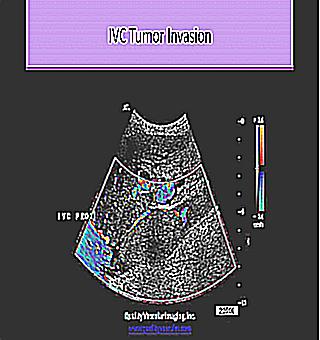Home >
Erectile Dysfunction >
Definition of abdominal ultrasound
Definition of abdominal ultrasound

Ultrasound (ultrasound examination) abdominal, another name is transobdominal examination. Basic ultrasound examination procedure. During the examination, the patient does not feel any discomfort, absolutely no contraindications, it is allowed for any age category.
Abdominal pelvic ultrasound is prescribed for diagnosis when examining pregnant women, newborns, older people, retirees.
When is an abdominal ultrasound scan prescribed?
Abdominal ultrasound examination is a scan of organs through the peritoneal wall of the peritoneum. The probe is not inserted either into the anal canal or into the vaginal cavity; such procedures are performed by rectal or transvaginal ultrasound.
Transobdominal ultrasound examines the following:
- abdominal organs (gallbladder, liver, pancreas);
- organs in the urinary system (kidneys);
- diagnostics by examining female genital organs (ovaries, uterus, cervix, ureter);
- Examination of the urea and prostate gland in men.
What is an abdominal examination? This is the control over therapeutic therapy and diagnosis of almost all organs. Transabdominal ultrasound scanning is performed using a special abdominal sensor: urea, gallbladder, liver, kidneys.
The abdominal method is rarely used to examine the genitourinary tract. The most informative research in this area is echography through the rectum or vagina.
Sometimes doctors do not recommend the internal insertion of the sensor, in this case external scanning (transabdominal) is used. This is carried out for serious pathologies of the prostate gland of an advanced course, in gynecology for women who do not have sexual intercourse or during menstruation.
The course of pregnancy is monitored with an ultrasound machine, observations begin from twelve weeks of the term, continuing until the birth day. The law establishes the terms for planned ultrasound of the second and third trimester. A specialized specialist can order additional research if necessary.
Abdominal Ultrasound Results
- Examinations with this device can be carried out without time limits between procedures. The procedure has no contraindications, such as an X-ray, should not be done more often than once a year.
- An ultrasound examination is prescribed when the diagnosis is confirmed or denied, as well as during medical therapy.
- An abdominal scan is a necessary control to find out how the patient's body is recovering after treatment.
- Doctors conduct external scans during preventive examinations for diseases caused by age-related changes and other pathologies.
This examination allows you to detect pathological processes in:
- Gall bladder - urolithiasis, cholecystitis, genetic pathologies.
- Liver - hepatitis, cirrhosis, cystosis, abscess, fatty, tissue degenerations.
- In the pancreas - stone formations in the ducts, cysts, necrosis, swelling, abscess, inflammation.
- Spleen - heart attack, hematoma, organ fissure, abscess.
- Kidneys - urolithiasis, inflammation, cyst, abscess, neoplasms.
- Bladder - stones, foreign body, swelling, inflammation, sand.
- Prostate gland - malignant tumor, prostatitis, adenoma.
- Female genital organs - uterine abnormalities, myomatous pathologies, endometriosis, cystosis, polycystic, ectopic pregnancy, tumor.
Carrying out an abdominal examination
To carry out abdominal ultradiagnostics, a special convex ultrasound probe is required. The device has a wide frequency range, scans the skin at a depth of 25 centimeters. The specialist adjusts the desired frequency for each patient individually, taking into account the complexion and age.
The procedure is carried out in the following order. The patient needs to undress up to half, you can simply lift the clothes, freeing the peritoneal area, when an ultrasound of the kidneys is done, the lateral zones of the trunk are scanned from the back. Therefore, it is recommended to dress in looser clothes for examination.
A special helium liquid is applied to the skin. This application expels excess air bubbles, ensuring the maximum contact of the sensor with the patient's skin, which allows for a more detailed informative examination. Research sessions last twenty minutes, sometimes less.
How preparation is done
For such an ideal medical procedure without pain, discomfort, preparation should be done. Such a study has no contraindications, which makes it possible to apply the study even to newborn babies.
To get an accurate picture, the doctor recommends that patients eliminate foods that lead to gas formation from the diet in a few days. This will help to avoid the accumulation of gas bubbles, resulting in a more accurate image.
Do not eat cabbage, legumes, fresh fruits and vegetables, carbonated drinks, pastries, sweets. To fix the required diet, doctors advise taking Espumisan for 2-3 days, which can be replaced with activated carbon.
The intestines must be cleaned, for this enema is carried out. Enema is performed on a full stomach
An important point for a clear scan is a full urea. To do this, an hour before the study, patients should drink at least 1000-1500 ml of water.
Before conducting an ultrasound examination, a specialized specialist will individually recommend the rules of preparation in a particular case for an abdominal ultrasound. For example, in many cases special preparation, enemas, and diet are not required. This primarily applies to pregnant women.
Today, ultrasound examination is the most informative scan of the body to detect pathologies in the internal organs.



























